
9 Essential Actions for Teams in Confluence
Confluence has become the backbone of collaboration for thousands of teams worldwide. Yet, according to Atlassian’s State of Teams 2025 report , workers still spend nearly 25% of their time just searching for information. And as Atlassian’s AI Rovo or other AI tools reshape how we work, structured and accessible documentation has never been more essential. Here are nine research and data-backed steps every team should take before 2026 to get the most out of Confluence.

Guest Accounts for Jira: Why Wait When You Can Collaborate Securely Today?
There’s been a lot of buzz lately around the possibility of Guest Accounts for Jira Cloud - a new way to invite external users into your instance without granting full licenses. It sounds great on paper. After all, Confluence already offers a Guest Account feature, and it’s natural to expect Jira to follow. But here’s the truth: while Atlassian might eventually roll out some form of guest access, you don’t have to wait to collaborate securely with external stakeholders.

Easy Insights, Anywhere: eazyBI with External Share for Confluence
If you use eazyBI for Jira and Confluence, you already know how powerful it can be. eazyBI is a general-purpose Business Intelligence (BI), analytics, and reporting tool supporting many data sources — including tightly integrated dedicated apps for Atlassian Jira and Confluence. It enables teams to build rich reports, dashboards, visualizations, and custom analyses directly inside the Atlassian ecosystem. Why External Sharing Can Still Be Tricky While eazyBI is not a real-time analysis tool, this is an intentional design choice that ensures performance and reliability across large datasets.

When “Peak Billing” Comes Knocking: How to Manage Atlassian’s New Pricing with Smarter Sharing
If you are not living under a stone, you must have heard about Atlassian’s new pricing model. This October, they introduced the “maximum quantity billing” (MQB) - a major shift in how customers are billed. This change is intended to provide more predictable costs and simpler tracking for budgeting and planning. But, at the same time, customers will need to manage user licenses carefully to optimize costs, especially if user counts fluctuate frequently within a month.

Build, Brand, and Publish a Confluence Knowledge Base: Comparing External Share and Scroll Viewport
When you need to share Confluence content beyond your internal team, the right app can transform how you work. A particular case is when your Confluence content needs to double as a public knowledge base - the right add-on determines how polished, secure, and easy to maintain the final site can be. In this article, we want to introduce two of the most popular solutions: Warsaw Dynamics’ External Share for Confluence and K15t’s Scroll Viewport for Confluence .

From Design to Sharing: Karma Page Builder and External Share for Confluence
Sharing Confluence content with people outside your organization often comes with limitations. With External Share for Confluence, you can securely define what to share and with whom. (If you’d like to read a comparison between using Confluence guest accounts and our app, click here. ) When you combine Karma Page Builder for Confluence with External Share for Confluence,you can achieve a whole new way of working. Now, you can design stunning Confluence pages with Karma and safely share them with external partners and customers using External Share.

Beyond Confluence’s Limitations: What’s the Best Way to Collaborate Externally?
In today’s connected world, collaboration doesn’t stop at your company’s firewall. Teams often need to work closely with clients, contractors, vendors, auditors, or partners - people who aren’t part of their internal Confluence instance. This raises a challenge: how can you securely share relevant content while protecting everything else? Atlassian offers a built-in option: Guest accounts. But there’s also a more flexible solution - a marketplace app: External Share for Confluence.

Fresh Look at Page Customization for External Share for Confluence
If you’re using External Share for Confluence, you’ll likely appreciate the recent update to the Page Customization layout in Global Settings. While not a brand-new feature, this update brings more user-friendly experience that simplifies how teams shape the look and feel of shared pages. What’s Changed? Previously, customizing shared pages involved clicking through multiple nested tabs such as General, Header, Page, Password Page, and Footer. Uploading a file, like a favicon, meant navigating through button-based selections.

No Jira Account? No Problem. Here’s How to Vote on Work Items via External Share for Jira
Moving Beyond Jira’s Native Upvote Feature Voting feature helps you quickly gather feedback and prioritize work. Jira’s built-in voting lets internal users signal which work items (issues) are important by selecting the Vote button on a Jira work item. The total number of upvotes can then be seen by anyone with access to that work item. It’s simple, but limited. There’s no downvote option, and external users can’t participate.

How to Share a Loom Video on a Confluence Page Using the External Share for Confluence App
In today’s flexible, digital workspace, finding efficient ways to share knowledge and updates is crucial, especially for remote and async teams. One powerful tool you can use is Loom. Add Loom videos to Confluence to enrich documentation, share insights, give feedback to teammates, and much more. This article will guide you through how to embed and share Loom videos directly from your Confluence page using the External Share for Confluence app.

External Share is an app that we use basically every day, it's now a part of our solution
Recently, we had the pleasure of speaking with Maria Luisa Frigerio, Chief Operating Officer at DG Prolink, an Atlassian Silver Solution Partner based in Italy. DG Prolink specializes in HR management and business consulting, helping organizations implement and customize solutions tailored to their unique processes and teams. By combining deep expertise in project and process management with agile frameworks, they deliver exceptional value to their clients. One of the key challenges DG Prolink faces is securely and efficiently sharing content with external stakeholders—including clients, consultants, and partners—without adding them as users to their Atlassian platform.
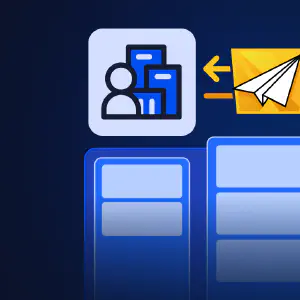
Cross-Company Collaboration with External Share for Jira
Why Jira Boards? Jira boards are workspaces that help teams manage work, track progress, and collaborate on projects efficiently. They provide a clear overview of Jira issues, statuses, and workflows, making it easier to stay organized and productive. For example, teams with larger projects or multiple workstreams, teams that practice scrum are ideal for using Jira boards. Warsaw Dynamics’ External Share for Jira lets you securely share Jira boards with clients, contractors, and external teams, even if they don’t have a Jira license.

Integrating Apps for Smarter Workflows: External Share for Jira Meets Smart Fields
In today’s fast-paced business environment, apps for Jira don’t just help teams work smarter - they open the door to even greater potential when integrated. By connecting tools, you empower your team with seamless workflows, enhanced insights, and powerful automation. When we met the Decadis team, we saw an incredible opportunity to combine the strengths of our apps - External Share for Jira and Smart Fields (an app created by Decadis as a complement to their Jira Workflow Toolbox app) - to create a dynamic, user-friendly solution.

Integrate with Lango Translator: Share documents with automatic translation
Today, we’re excited to announce a new way to make multilingual document sharing easier than ever! By integrating External Share for Confluence with Lango Translator, you can now securely share your Confluence pages while allowing external viewers to read the document in their preferred language—no need for copy-pasting text into a translator! This integration empowers teams and partners to connect and collaborate seamlessly across language barriers. A Customer’s Positive Feedback When a valued customer, Mr.

Now, External Share for Confluence is a part of our organization. Going back to sharing documents via email feels impossible
We recently had the pleasure of speaking with Fabio Genovese the driving force behind Artigiano del Software, an Atlassian Silver Solution Partner based in Italy. Fabio shared his team’s inspiring journey of adopting External Share for Confluence, highlighting how it transformed their process of collaboration with their customers. Watch the full interview About Artigiano del Software Artigiano del Software provides deep expertise in Atlassian products and apps to create custom solutions tailored to the needs of organizations, whether small startups or large enterprises.

Managing bug reporting with External Share for Jira
Efficient bug management is vital for delivering high-quality software, especially when external stakeholders like beta testers or clients are involved. The External Share for Jira app simplifies this process by enabling seamless collaboration through shared Jira boards. This article explores how you can use the app to empower external users to report and track bugs directly, saving time and streamlining communication. Streamlining Bug Reporting: How It Works Managing bug reports becomes significantly easier with a Jira board dedicated to external collaboration.

Take a minute to meet Madalina Minut from Life in Codes
We had the pleasure of interviewing Madalina Minut from Life in Codes to discuss their experience using External Share for Confluence. Madalina shared valuable insights into how the app helped streamline their work during a high-stakes event. About Life in Codes Life in Codes is on a mission to help organizations of all kinds work more productively. As an Atlassian Solution Partner active across Romania, Estonia, Belgium, the UK, and the UAE, their team supports clients ranging from startups and SMEs to large enterprises like SWIFT, government organizations such as the European Commission, and global logistics providers like DHL.

Using External Share for Confluence app with Google Forms
Confluence is a potent tool designed for creating and sharing content within teams and organizations. Its effectiveness is further enhanced by an impressive array of macros and apps that expand its functionality. Among these is the iframe macro, which allows users to embed external content - such as web pages or forms from third-party applications - directly into Confluence pages. This feature becomes even more potent when used with the External Share for Confluence app, which fully supports the iframe macro.

Keep External Stakeholders Updated: External Share for Jira
When working with clients or third parties who don’t have direct access to your Jira workspace, it’s important to be transparent about project progress. However, it’s also crucial to protect the sensitive information. With External Share for Jira, you can securely share updates and manage access for external stakeholders. We would like to introduce some helpful features, including Exclude Content Macro, setting up Single Sign-On (SSO), configuring a custom domain, and sharing project boards.

SSO Verified Domains: External Share for Confluence
In this article, we are excited to introduce a new feature in the External Share for Confluence. This feature allows you to verify a domain by adding a TXT record at the DNS level, which is generated by our tool. After verifying that the record is set correctly on the domain, we are assured that the user who set up SSO also has access to the designated domain. This allows users to skip email verification when registering with Single Sign-On (SSO).

A Strategic Approach to Software Deployment with External Share for Confluence
The deployment of new software solutions in a corporate environment is often filled with challenges, especially when it involves coordination between internal teams and external partners. This was the scenario at DeltaTech, where the deployment of a project management tool needed cooperation from multiple sides. Through this blog, we explore how DeltaTech, a hypothetical company, once again utilized External Share for Confluence to turn its challenges into a success story.
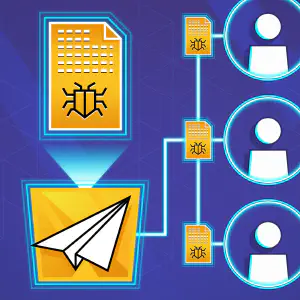
Enhancing Bug Reporting to External Developers with External Share for Jira
Today in JES’s Factory things are not going smoothly. The CNC machines have a hard time communicating with the server after a recent software update. The developers can’t figure out the issue on the Factory’s end, so the only option is to get in touch with the hardware company. Fortunately for them, the CNC provider uses External Share for Jira to swiftly communicate such issues. The Factory can report and fix issues faster by using a secured link with the JES Factory developers, bypassing the customer portal and waiting for a CS representative to create an issue.
Sharing Without Oversharing: Tailored Transparency for External Boards
Table of Contents Before We Dive In Configuring the Board to Exclude Backlog Adding Their Issues to the Active Board Scrum Board Automation Kanban Board Automation Conclusion Additional Resources Connect with Us on LinkedIn In the realm of agile collaboration, the devil is in the details. Balancing transparency with privacy is akin to a tightrope walk. Walk it with confidence. With External Share for Jira, we ensure that external collaborators see only the active tasks and their contributions, keeping the backlog discreetly tucked away in the shadows.

Introducing The New Issue Creation Update for External Share
In the world of project management, collaboration is crucial. Every day we face new challenges and issues we need to overcome. Now it’s easier for your external collaborators to communicate them to your team. We’re excited to present the latest enhancement to the External Share for Jira: the Issue Creation update. This update enables external users to create new issues on shared boards, timelines and filters, streamlining collaboration and project success.
Boost Team Collaboration with Jira's Smart Checklist + External Share Integration
“Coming together is a beginning, staying together is progress, and working together is success.” Henry Ford Effective teamwork and collaboration lie at the heart of any successful project. Acknowledging this truth, the tools available in the Jira ecosystem continuously evolve, providing new opportunities for seamless collaboration. Today, we are focusing on a particularly exciting development: the integration between Smart Checklist and External Share . This powerful combination is set to transform the way teams work together.
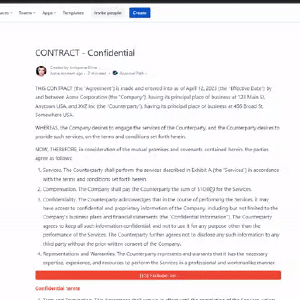
Mastering the Art of Selective Sharing
Sharing made simple: exclude content with ease Hey there, fellow Confluence enthusiasts! Do you ever find yourself needing to share a Confluence page with someone outside your organization, but there’s just that one piece of sensitive information you’d rather keep under wraps? Well, fear not! Today, we’re diving into the magical world of the “exclude content macro” in the External Share for Confluence add-on. Get ready to become a selective sharing maestro!

Enhance collaboration with External Share's Timeline Share feature
Collaboration is the key to success, and Timelines are the key to collaboration. Hey there, are you struggling to collaborate with your clients and partners on Jira Timelines? Well, fret not, my friend! Let me introduce you to Timeline Share, the newly introduced feature to External Share, the ultimate feature that enables Jira users to share their Timelines with external stakeholders without breaking a sweat. Create and Customize Timeline Share operates differently from your standard share feature.
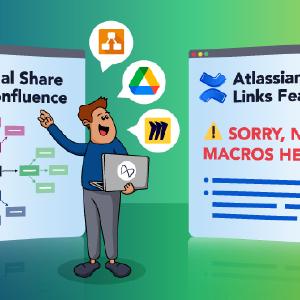
Popular Confluence Macros That External Users Can See
Atlassian’s new public links feature lets you create a special URL directing to a safe, read-only version of a Confluence page, and share it with someone who doesn’t have a Confluence license. It’s similar to our Atlassian Marketplace app, External Share for Confluence , except its functionality and security options are much more limited. One big functionality limit with the native links feature is that you can’t share many of Atlassian’s own Confluence macros, and you can’t share *any *3rd party macros.
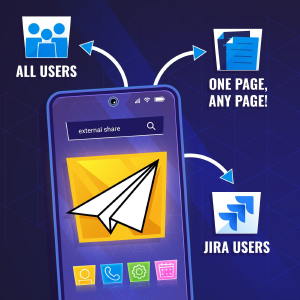
External Share for Confluence versus Atlassian's Guest Users Feature
Atlassian recently announced their Confluence guest users feature and people have since been asking us: what’s the difference between the built-in feature and our app, External Share for Confluence ? Before we go into detail, here’s a handy comparison table, showing the differences in a nutshell. Now, let’s dive into the details… What is Atlassian’s Confluence guest users feature? With this new feature, you can have 5 free guest users per licensed user added to a specific space in your Confluence instance.
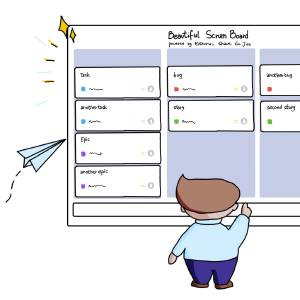
How to Share Your Jira Agile Board with External Users
There’ll be times when you want to share a bunch of Jira issues externally without buying extra licenses . Maybe you’re working on a project with an external partner or contractor that has multiple issues requiring the external user’s attention. External Share for Jira allows you to give external users secure, temporary access to those issues in three ways: Create External Share links to each issue individually Create an External Share link to a list of issues using Jira Query Language (JQL) Create an External Share link to an entire Scrum or Kanban board If you have a lot of issues to share, you probably don’t want to go down route one.
Custom Domains for Confluence and Jira: The Ultimate Workaround to End Your CLOUD-6999 Woes
The Atlassian Community has been hankering after custom domains for Confluence and Jira for absolute yonks. It’s difficult to offer continuity of service – not to mention disorienting for the customer – when you’re directing them to a website that’s not your company’s in order to view your resources and documentation. You’ve probably heard of the famous CLOUD-6999 Jira ticket . Behind it lies a tale of woe and despair.
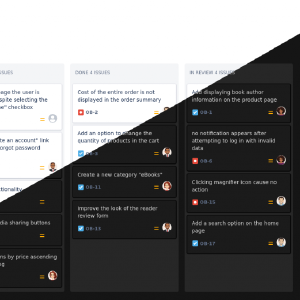
With Automation, Dark Mode, Custom Domains & More, External Share is Basically A New App
Our team have added so many new features and improvements to External Share for Jira and Confluence over the past few months that what customers are getting now is effectively a brand new app. Let’s walk through some of the additions. Automated Share Management We would all rather be doing things that are valuable. Things that make us money. Admin tasks don’t make us money. They make usbored. This is why we’ve added a new Automated Share Management feature to External Share for Jira .
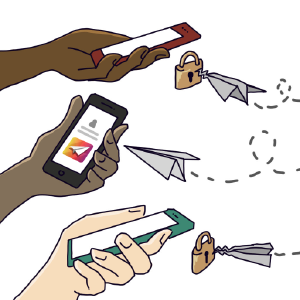
Controlling Who Sees Your External Share for Confluence and Jira Links
Companies have been asking us for a way of restricting which users can see their External Share for Jira and Confluence links. Previously, you could create a secure link to your Confluence page or Jira issue and share it with a chosen person outside your instance. That link was always safe from a randomer on the internet finding it, thanks to its unguessable 16-character URL. It could be protected further by adding a password, making the page or issue inaccessible to anyone without it.
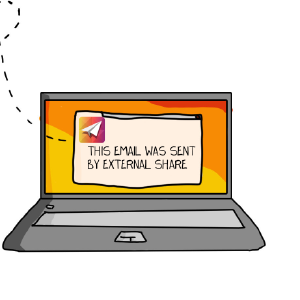
How to Customize your External Share Email Templates
After creating an External Share link to a Confluence page or Jira issue, there are two ways to share the link with a user outside of your instance: Copy the URL of the External Share version of the page or issue and paste it into an email or instant message. Click “Send via email”, which will send your External Share link to the email address you enter using an email template.
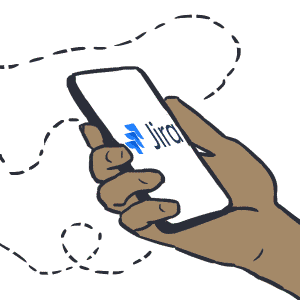
How to Share Jira with External Users (Securely)
As Jira grows ever more ubiquitous, it’s increasingly necessary for larger and more diverse groups to communicate and collaborate on projects in real-time. The ancients’ rituals of emailing screenshots are embarrassingly outdated for software-enabled teams that bought Jira to avoid email-chain siloes and the disheartening disaster of discovering efforts have been duplicated due to a lack of real-time project management. Fear not! There are three options for collaborating securely with external users in Jira:

4 Ways of Sharing Confluence Content
If your organization is using Confluence, it’s likely that you’ve been asked how to share the content you’ve created. There are a lot of reasons you may want to share Confluence pages, e.g. you may need to collaborate with someone on the content, or deliver it to someone inside or outside of your organization. Understanding the different options for sharing from Confluence is essential and you’ll probably end up using a combination of them, depending what you’re doing.

Wanna See Some More? Now Your External Users Can Become Watchers on Jira Issues
A new feature has just launched in the cloud version of our External Share for Jira app. We call it ‘External Watch’. External Watch lets your external users subscribe to the issues you’ve given them access to. That’s good for them because it saves them time. It’s good for you because it makes collaboration more immediate so that work can progress faster. For the uninitiated, External Share for Jira gives external users secure, temporary access to a live Jira issue by generating unique links with optional passwords and time limits, and easy-to-specify permissions.






